
Hellenic Journal of Nuclear Medicine
Scope & Guideline
Elevating Standards in Nuclear Medicine Research
Introduction
Aims and Scopes
- Clinical Applications of Nuclear Imaging:
The journal emphasizes research on the clinical utility of nuclear imaging techniques such as PET, SPECT, and hybrid imaging modalities. This includes studies on diagnostic accuracy, treatment response evaluation, and prognostic implications of imaging findings. - Radiopharmaceutical Development and Utilization:
A core area of the journal is the exploration of new radiopharmaceuticals and their applications in various disease states, particularly in oncology. This includes comparative studies of different radiotracers and their effectiveness in diagnosing and monitoring diseases. - Innovative Imaging Techniques:
The journal highlights advancements in imaging technologies and methodologies, such as the integration of AI in imaging analysis, novel reconstruction algorithms, and the development of new imaging agents that improve diagnostic capabilities. - Interdisciplinary Approaches in Nuclear Medicine:
The journal promotes interdisciplinary research that combines nuclear medicine with other fields such as oncology, cardiology, and endocrinology, fostering a comprehensive understanding of disease mechanisms and treatment outcomes. - Patient-Centered Research:
Research focusing on improving patient outcomes, quality of life, and personalized medicine approaches in nuclear medicine is a significant aim of the journal, reflecting a commitment to patient-centered care.
Trending and Emerging
- Integration of AI and Machine Learning:
There is a growing trend towards the application of artificial intelligence and machine learning in imaging analysis, enhancing diagnostic accuracy and streamlining workflows in nuclear medicine. - Comparative Effectiveness Research:
Recent publications increasingly focus on comparative effectiveness studies between different imaging modalities and radiopharmaceuticals, highlighting the journal's shift towards evidence-based practice in nuclear medicine. - Theranostics in Cancer Treatment:
The concept of theranostics, which combines diagnostics and therapeutics using targeted radiopharmaceuticals, is gaining prominence, reflecting an innovative approach to personalized cancer care. - Cardiac Imaging Innovations:
There is an emerging focus on cardiac imaging applications, particularly the use of nuclear techniques to evaluate cardiac conditions, indicating a broader application of nuclear medicine beyond oncology. - Multimodal Imaging Approaches:
A trend towards multimodal imaging, integrating various imaging techniques to provide comprehensive diagnostic insights, is becoming increasingly prevalent in recent publications.
Declining or Waning
- Traditional Imaging Techniques:
There appears to be a declining focus on traditional imaging techniques that do not integrate newer technologies. As hybrid imaging and advanced methodologies gain traction, studies relying solely on older modalities have become less frequent. - Generalized Case Reports:
While case reports are valuable, the journal has seen fewer publications focusing on generalized case studies without significant new insights or methodologies, indicating a shift towards more impactful research. - Basic Research on Radiopharmaceuticals:
There is a noticeable reduction in basic research studies focused on the biochemical synthesis and foundational studies of radiopharmaceuticals, as the journal increasingly prioritizes clinical applications and efficacy studies. - Epidemiological Studies:
Epidemiological research related to nuclear medicine applications has seen a decline, possibly due to a stronger emphasis on clinical trials and direct patient outcomes rather than population-based studies. - Historical Perspectives in Nuclear Medicine:
Research focusing on historical perspectives or retrospective analyses within nuclear medicine has diminished, reflecting a trend toward contemporary and forward-looking research.
Similar Journals

EUROPEAN JOURNAL OF NUCLEAR MEDICINE AND MOLECULAR IMAGING
Elevating Standards in Nuclear Medicine PracticeThe European Journal of Nuclear Medicine and Molecular Imaging is a prestigious, peer-reviewed journal published by Springer, dedicated to advancing the field of nuclear medicine and molecular imaging. With an impressive impact factor and ranked in the Q1 category for both Medicine and Radiology, Nuclear Medicine and Imaging, this journal is a pivotal platform for researchers and practitioners to disseminate significant findings from 1996 to the present, reflecting the evolution of the field. The journal boasts a notable Scopus rank, standing at #8 out of 333 in its category, placing it in the top 3% of published works, which highlights its critical importance in shaping contemporary practices and research innovations. Although it does not offer an open-access model, the journal provides various access options to ensure that important research is accessible to professionals, students, and academics alike. Through rigorous peer review and a commitment to high-quality publication, the European Journal of Nuclear Medicine and Molecular Imaging plays an essential role in the advancement of nuclear medicine, contributing to better diagnostic and therapeutic outcomes globally.
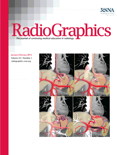
RADIOGRAPHICS
Pioneering Insights in Nuclear Medicine and ImagingRADIOGRAPHICS, published by the Radiological Society of North America (RSNA), is a premier academic journal dedicated to the field of radiology, nuclear medicine, and imaging. With an impressive impact factor and recognition in the top quartile (Q1) of both Medicine (miscellaneous) and Radiology, Nuclear Medicine and Imaging categories, RADIOGRAPHICS stands out as a leading platform for disseminating high-quality research and clinical findings. Since its inception in 1985 and projected to run until 2024, the journal has consistently provided essential insights into cutting-edge imaging techniques and advancements in radiological practices, making it invaluable for professionals, researchers, and students alike. Although it does not offer open access, the journal continues to flourish with a robust reputation, ranked 35th in its field according to Scopus, placing it within the 89th percentile of its category. With an unwavering commitment to enhancing the understanding and application of radiological sciences, RADIOGRAPHICS remains a pivotal resource for advancing knowledge and expertise within the medical community.
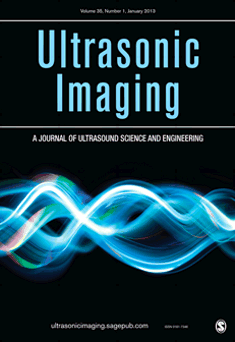
ULTRASONIC IMAGING
Transforming Healthcare Through Ultrasound InsightsULTRASONIC IMAGING, published by SAGE PUBLICATIONS INC, is a leading journal within the fields of Radiology, Nuclear Medicine, and Imaging, with a particular focus on advancing the science and application of ultrasound technology. Since its inception in 1979, the journal has provided a platform for high-quality research, featuring innovative studies that bridge theoretical advancements and practical applications, making it an essential resource for researchers and professionals. With a notable impact factor reflecting its robust contribution to the medical community (2023: Q2 rankings in both Radiological and Ultrasound Technology and Radiology, Nuclear Medicine, and Imaging), ULTRASONIC IMAGING serves to disseminate pivotal developments in diagnostic imaging techniques, enhancing the understanding of ultrasound's role in patient care. Researchers are encouraged to explore this journal's collection of cutting-edge articles that push the boundaries of knowledge in ultrasound imaging and its implementation in clinical practices.

Iranian Journal of Radiology
Transforming Radiology with Cutting-Edge StudiesWelcome to the Iranian Journal of Radiology, a pivotal platform dedicated to advancing the field of radiology, nuclear medicine, and medical imaging. Published by BRIEFLAND, this journal aims to disseminate high-quality original research, reviews, and clinical studies that contribute substantially to the global scientific community. Established in 2008 and spanning until 2024, the journal provides an essential archive of knowledge in a rapidly evolving discipline. Although it currently holds a Q4 quartile ranking in the 2023 Scopus metrics, it serves as an important resource for both emerging and established researchers looking to submit their work. Located in the Netherlands, the journal is committed to open dialogue and collaboration amongst professionals in the field, reflecting its accessibility and relevance to both practitioners and academics. With its continued growth and commitment to quality, the Iranian Journal of Radiology is poised to enhance understanding and innovation in diagnostic imaging.
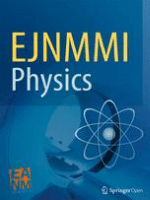
EJNMMI Physics
Unveiling Breakthroughs in Biomedical Engineering and Imaging.EJNMMI Physics, the premier journal for advancements in nuclear medicine and imaging, is published by Springer in Switzerland and has been an open-access outlet since 2014, allowing for broad dissemination of critical research findings. With an ISSN of 2197-7364, the journal aims to bridge the gap between state-of-the-art physics and practical applications in biomedical engineering and radiology. Its impressive Q1 ranking in multiple categories, including Biomedical Engineering, Instrumentation, Radiation, and Radiology, Nuclear Medicine and Imaging, exemplifies its significant impact in the field. The journal boasts exceptional metrics with Scopus rankings placing it in the top echelons across disciplines, including a 6th position out of 58 in Radiation, and serves as an essential resource for researchers, professionals, and students who are eager to contribute to and stay informed about cutting-edge scientific advancements. With a broadening scope until 2024, EJNMMI Physics is an indispensable tool for those dedicated to pushing the boundaries of knowledge in medical physics and imaging technologies.

Radiologie
Transforming Healthcare with Advanced Imaging TechniquesRadiologie, published by SPRINGER HEIDELBERG, is an emerging journal dedicated to the fields of radiology, nuclear medicine, and imaging. With an ISSN of 2731-7048 and E-ISSN 2731-7056, this journal does not currently offer open access, providing a traditional yet respected platform for scholarly communication. Founded in 2022, it aims to advance the understanding of cutting-edge imaging techniques and their applications in clinical practice, contributing to improvements in diagnostic accuracy and patient care. Despite its recent establishment, Radiologie is positioned within the Q4 quartile category, reflecting its developing presence in the academic landscape, with a current Scopus rank of #231 out of 333 in its category. The journal serves as a vital resource for researchers, professionals, and students seeking to stay abreast of the latest developments in radiological science, imaging technology, and their clinical implications, ensuring ongoing engagement and advancement in this critical area of healthcare.
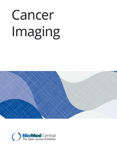
CANCER IMAGING
Exploring New Horizons in Cancer DiagnosticsCANCER IMAGING, published by BMC, stands as a leading open-access journal in the realms of oncology and medical imaging, significantly contributing to the advancement of cancer research since its inception in 2000. With an impressive impact across multiple domains—most notably ranking Q1 in prestigious categories such as Medicine (miscellaneous), Oncology, and Radiology—this journal ensures high visibility and influence within the academic community. As of 2023, it is recognized in various Scopus rankings, securing top positions in the fields of Radiology, Nuclear Medicine, and Imaging, alongside Radiological and Ultrasound Technology. The journal's commitment to open-access publication, adopted in 2014, enhances accessibility for researchers, healthcare professionals, and students alike, fostering an inclusive environment for sharing critical advancements and innovative methodologies in cancer imaging. Set in the vibrant landscape of the United Kingdom, CANCER IMAGING continues to play a vital role in elucidating the complexities of cancer diagnostics and treatment, establishing itself as an essential resource for those pursuing excellence in cancer care and research.

European Journal of Hybrid Imaging
Transforming Knowledge into Practice in Hybrid ImagingEuropean Journal of Hybrid Imaging, published by SpringerNature, stands as a pivotal platform for scholarly discourse in the rapidly evolving fields of hybrid imaging technologies and methodologies. Since its inception in 2017, this open access journal has significantly contributed to the interdisciplinary interface of biophysics, computer science, molecular medicine, and radiology. With its current standing in the Q2 and Q3 quartiles across various categories, it provides valuable insights and research outputs pertinent to both academic and clinical practitioners. The journal's rigorous peer-review process ensures the highest standards of scholarly integrity, while its open access format promotes global accessibility and encourages collaborative research efforts. Covering a diverse range of topics pertinent to hybrid imaging, the journal serves as an essential resource for researchers, professionals, and students alike, fostering innovation and knowledge exchange within the scientific community.
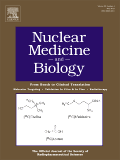
NUCLEAR MEDICINE AND BIOLOGY
Fostering excellence in nuclear medicine and molecular biology.NUCLEAR MEDICINE AND BIOLOGY, published by Elsevier Science Inc, is a premier journal dedicated to advancing the fields of nuclear medicine and molecular biology. Since its inception in 1986, this journal has served as a vital platform for the dissemination of high-quality research, with a clear focus on the innovative applications of nuclear techniques in biological settings. It is categorized in the Q3 tier for both Cancer Research and Molecular Medicine, and Q2 for Radiology, Nuclear Medicine and Imaging, highlighting its significant standing within these disciplines. The journal's Scopus rankings reflect its strong impact, placing it in the top quartile of its categories, particularly in Radiology, Nuclear Medicine, and Imaging. Researchers, professionals, and students alike will find this an invaluable resource for contemporary research findings and methodologies in nuclear medicine and its biological applications. Access to the journal is provided through subscription, ensuring that quality content remains available to its wide-ranging audience.
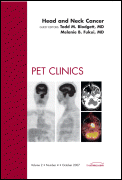
PET Clinics
Enhancing Treatment Outcomes through PET Innovations.PET Clinics, published by Elsevier Inc, is a premier academic journal focusing on the advancements and applications of Positron Emission Tomography (PET) in various medical fields. With its ISSN 1556-8598 and E-ISSN 1559-7814, the journal has established a strong reputation in the scientific community, reflected in its impressive Q1 quartile rankings in Medicine (miscellaneous), Radiation, and Radiology, Nuclear Medicine, and Imaging for 2023. The journal operates within a well-defined scope that bridges innovative research and practical clinical applications, targeting professionals, researchers, and students keen on the intersection of nuclear medicine and imaging technologies. Although not an open-access journal, PET Clinics ensures accessibility through institutional subscriptions, making valuable insights available to the academic community. With an emphasis on enhancing patient care and treatment outcomes through cutting-edge imaging techniques, this journal serves as an essential resource for those seeking to expand their knowledge and expertise in the rapidly evolving field of PET.